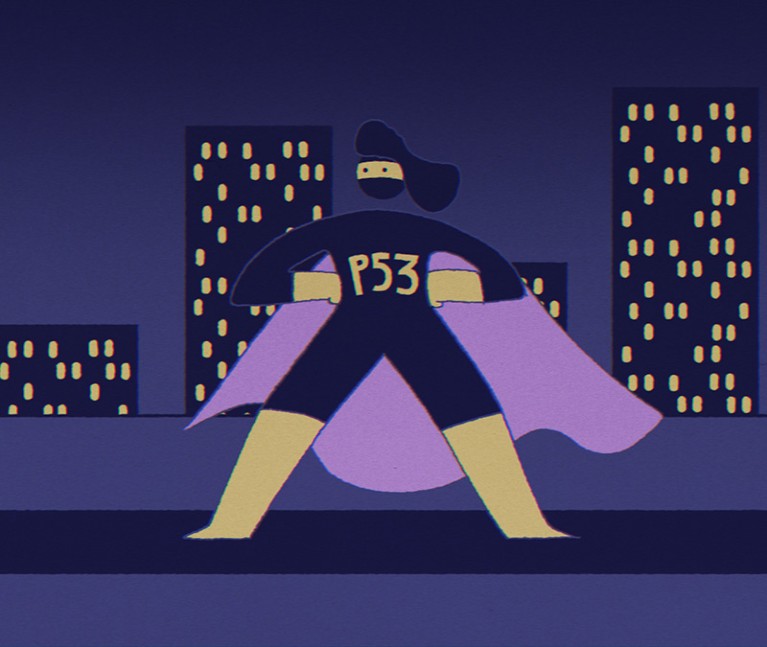
Illustration: Andrew Khosravani
When scientists first came across p53 in 1979, it was an intriguing but not Earth-shattering discovery. Six groups independently discovered a cellular protein with a molecular weight of roughly 53 kilodaltons — hence the name. It seemed that p53 was interacting with a tumour-inducing virus called simian virus 40, and researchers soon showed that healthy cells forced to express this newly cloned gene encoding p53 quickly became cancerous1.
But the truth was more complicated. As more researchers began to study p53, it became apparent that the tumour-causing versions of the gene were actually mutated. The unmutated, or wild-type, version of the gene, which was cloned from humans and mice in the 1980s, exerted the exact opposite effect: the gene acted as a potent inhibitor of tumorigenesis2. Scientists had even got its size wrong; p53’s true molecular weight is closer to 44 kilodaltons.
In the three decades since researchers came to this realization, p53’s biological significance has become ever more apparent. The protein coordinates a wide range of essential cellular functions, and its evolutionary history dates back to some of the earliest multicellular life on Earth. Most of the time, p53 is kept in an inhibited state at low levels in the cell until it is required. Environmental stress, abnormal metabolic activity, genetic damage and advanced ageing can all trigger the protein’s activation, enabling p53 to directly regulate the expression of hundreds of genes to initiate an appropriate response.
Some cellular crises might be minor, requiring a response focused on repair to restore cellular function. Catastrophic problems, however, might lead a cell to self-destruct to prevent further harm.
These functions make p53 a crucial defence against biological and environmental insults that can give rise to cancer, leading some people to dub the protein ‘the guardian of the genome’. As demonstrated by those early studies of mutant forms of the TP53 gene, mutations that interfere with the function of p53 are well-known drivers of cancer. Roughly half of all cancers are associated with p53 mutations3, and nearly 90% of people born with such mutations — a rare hereditary condition known as Li–Fraumeni Syndrome — will develop cancer in their lifetime. And even if p53 itself remains intact, other factors can keep it shackled and leave cells susceptible to tumorigenesis.
Despite a formidable dossier of research into the function of p53 and its myriad mutants, there are still no approved drugs that can selectively target the p53 pathway in cancer. But there are some promising avenues of attack, including molecules that neutralize the disruptive effects of specific p53 mutations or that counteract the excessive inhibition of p53 seen in some tumours. Further advances in these and other therapeutic approaches — and the identification of well-chosen combination therapies — could ultimately lead to a major victory against a broad range of tumour types.


 A visual guide to restoring the guardian of the genome
A visual guide to restoring the guardian of the genome
 Video: Guardian of the genome
Video: Guardian of the genome






